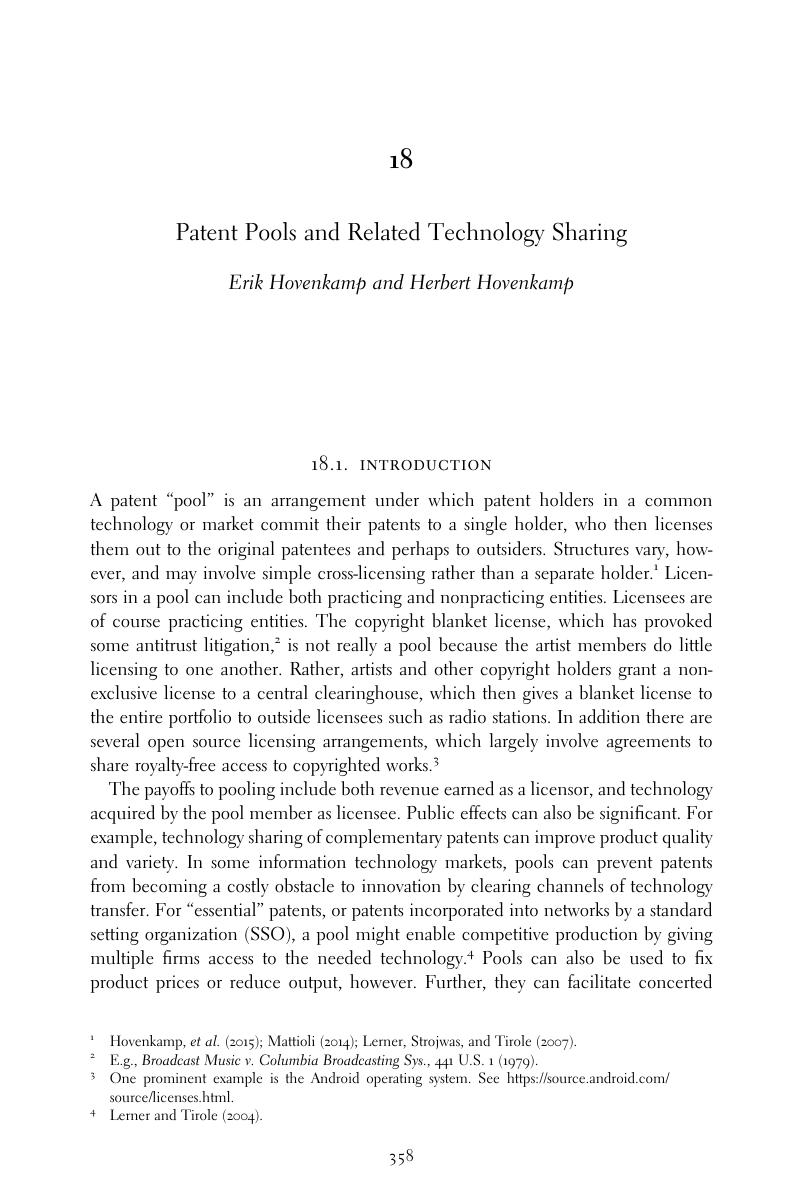Book contents
- The Cambridge Handbook of Antitrust, Intellectual Property, and High Tech
- The Cambridge Handbook of Antitrust, Intellectual Property, and High Tech
- Copyright page
- Contents
- Figures
- Tables
- Contributors
- Preface
- Part I Economics of Antitrust-IP
- Part II Institutional Design: Country Overviews
- Part III Monopolization
- Part IV Competitor Collaboration
- 16 Drug Patent Settlements
- 17 Copyright Licensing and the EU Digital Single Market Strategy
- 18 Patent Pools and Related Technology Sharing
- Part V Vertical Relations
- Part VI Mergers in High Technology
- Index
- References
18 - Patent Pools and Related Technology Sharing
from Part IV - Competitor Collaboration
Published online by Cambridge University Press: 04 May 2017
- The Cambridge Handbook of Antitrust, Intellectual Property, and High Tech
- The Cambridge Handbook of Antitrust, Intellectual Property, and High Tech
- Copyright page
- Contents
- Figures
- Tables
- Contributors
- Preface
- Part I Economics of Antitrust-IP
- Part II Institutional Design: Country Overviews
- Part III Monopolization
- Part IV Competitor Collaboration
- 16 Drug Patent Settlements
- 17 Copyright Licensing and the EU Digital Single Market Strategy
- 18 Patent Pools and Related Technology Sharing
- Part V Vertical Relations
- Part VI Mergers in High Technology
- Index
- References
Summary

- Type
- Chapter
- Information
- Publisher: Cambridge University PressPrint publication year: 2017
References
- 3
- Cited by



